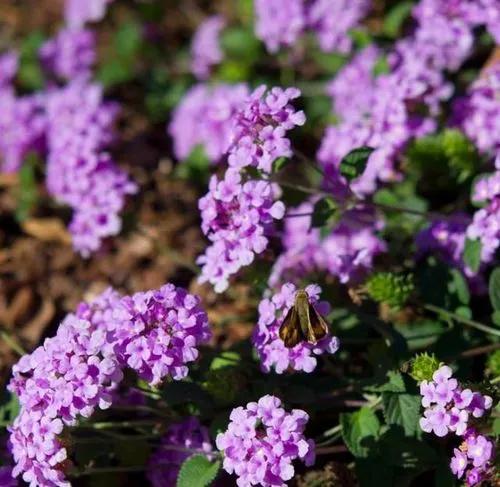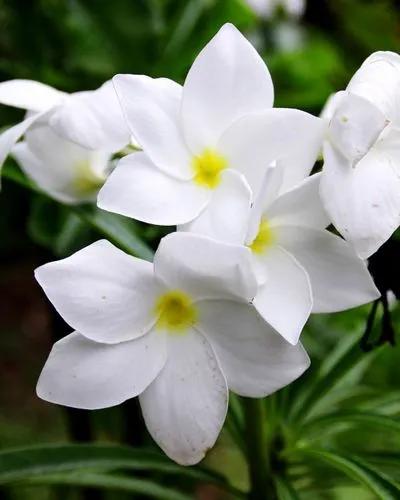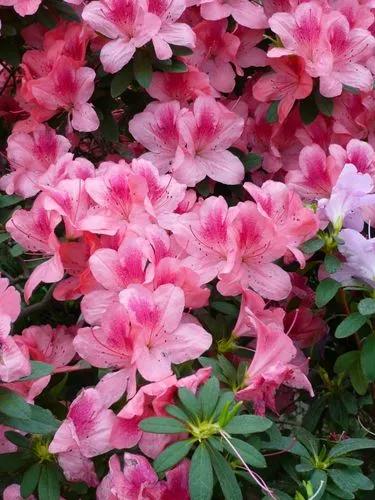Serissa is a genus of flowering plants in the family Rubiaceae, containing only one species, Serissa japonica. It is native to open sub-tropical woodlands and wet meadows in southeast Asia, from India, and China to Japan. It is commonly called the snowrose, tree of a thousand stars, or Japanese boxthorn; and was formerly called Serissa foetida. 'Foetida' referres to the unpleasant, vomit-like, odour that the trees give off if their leaves are pruned or bruised. Snowrose and tree of a thousand stars are different cultivars. The only method of differentiating is measuring the difference in the shape and size of the flowers produced. It is an evergreen or semi-evergreen shrub, 45–60 cm high, with oval, deep green, rather thick leaves that have an unpleasant smell if bruised (hence its name foetida). The upright stems branch in all directions and form a wide bushy dome. It is grown for its neat habit, good coverage of branches and long flowering time. It is also valued for its rough, grey trunk which tends to get lighter in colour with age. Serissa flowers practically all year round, but particularly from early spring to near autumn. The 4- to 6-lobed flowers are funnel-shaped and 1 cm wide. They first appear as pink buds but turn to a profusion of white flowers. Fertilizing is especially important during the long flowering period.
Serissa Foetida Variegata Care
Serissa Japonica
Other names: Serissa Foetida, Snowrose, Tree Of A Thousand Stars, Serissa Foetida Variegata



How to Care for the Plant

Water

Keep the rootball moist, but at the same time take good care not to overwater the serissa Bonsai tree. It must never dry out completely. If the tree drops its leaves due to some changes in the growing conditions, continue but slightly decrease watering.

Pruning

The serissa tolerates hard pruning which should be executed in early spring, if necessary. Young trees are trimmed back to 2 leaves when the shoots have produced 4 – 5 leaves. Older trees are trimmed less as long they are flowering, but are pruned thoroughly after flowering. Every two or three years the branches must be cut back to old wood in order to keep the tree shape compact. Branches and shoots can be wired at any time, but they are delicate and must be wired with great care. Remove the wire after approximately six months before it cuts into the bark.

Fertilizer

Apply a small amount of solid organic fertilizer every four weeks or use a liquid fertilizer in a low concentration every week during the growing season. Use a fertilizer with a balanced N-P-K ratio. In winter fertilize once a month with a low dose of liquid fertilizer if the tree is kept in a warm place. Do not fertilize unhealthy or not growing serissas.

Sunlight

Partial sun for S. foetida, full sun for S. crassiramea. If kept indoors, needs 1000 Lux. Use of grow lamps for 12 hours daily is beneficial.

Soil

Suitable soil with acidity pH 4.5-5.5. For soil of own preparation it is possible to take equal parts of peat, leaf, humus, turf and sand.

Temperature

Ideal temps range from 50-68 degrees. The plant dislikes sudden change in lighting and many die from lack of light when brought indoors.

Container

Popular bonsai specimen and great for containers, hedges and garden beds.

Popularity

557 people already have this plant 39 people have added this plant to their wishlists
Discover more plants with the list below
Popular articles






